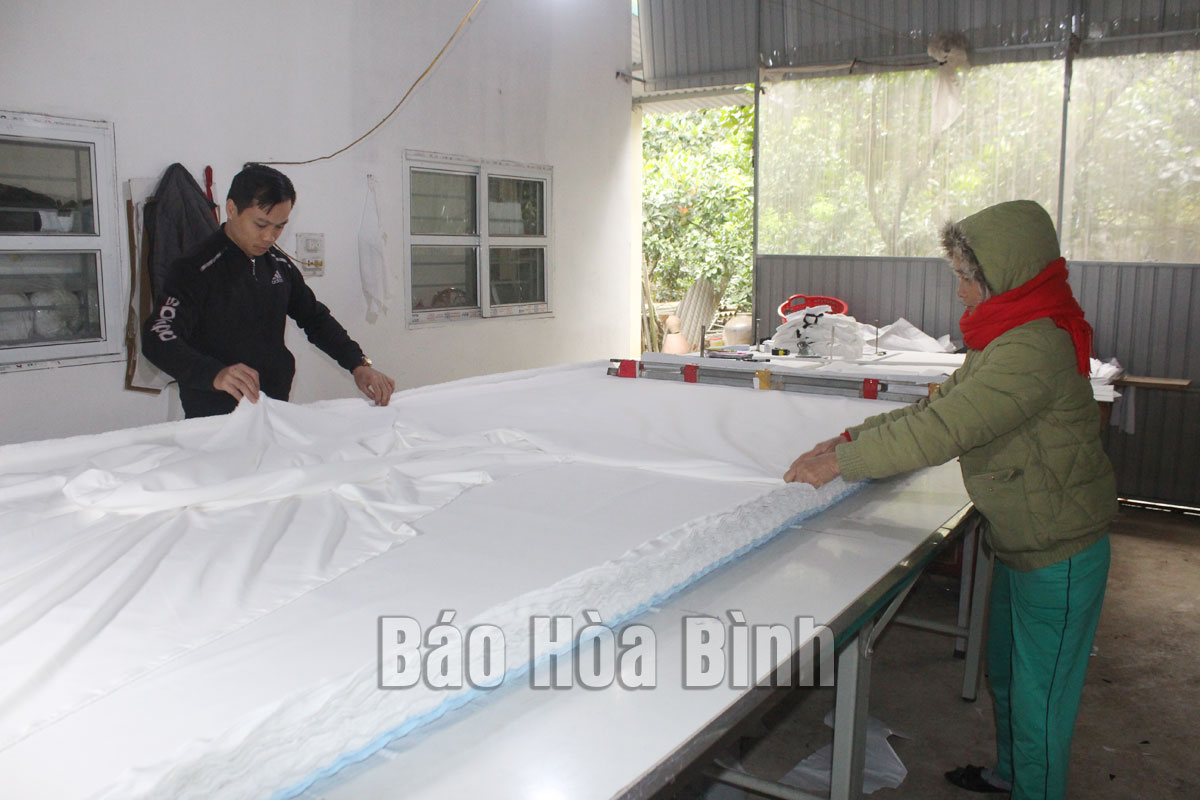
(HBO) – Hoa Binh is striving to bring its economic growth rate to the national average in 2025, which is part of the targets of Resolution 09-NQ/TU issued by the provincial Party Committee’s Standing Board on December 31, 2021, on economic restructuring in association with the transforming of growth model.
Photo: Hoa Binh expects 54 percent of the
industry-construction sector’s proportion in the provincial economic structure.
In the photo: Production at An Phuc garment and textile company in Yen Thuy.
Under the resolution, Hoa Binh aims to reform its economic structure in both
depth and width, enhancing the efficiency of investment, promoting strong
industries and products, and associating fast growth with social progress and
environmental protection, as well as climate change towards sustainable
development.
Specifically, in the 2021-2025 period, Hoa Binh strives to achieve gross
regional domestic product (GRDP) growth of at least 9 percent each year, and
productivity increase of 8 percent per year. In the period, the rate of poor
households is hoped to reduce 2.5-3 percent per year.
The economic structure is expected to continue to be transformed towards a
higher proportion of industry and service and lower rate of the
agro-forestry-fisheries sector. By the end of 2025, per capita GRDP of Hoa Binh
is hoped to reach about 100 million VND (4,408 USD) per year.
Total social investment in the 2021-2025 period is to top 120 trillion VND,
equivalent to about 32 percent of its GRDP, with an average annual rise of 8.2
percent. In the five years, Hoa Binh expects 280 domestically-invested projects
worth about 80 billion VND and 30 foreign-invested projects with a combined
capital of about 1 billion USD.
In 2025, the rate of trained labourers is expected to reach about 63 percent,
while digital economy is hoped to make up about 20 percent to the GRDP.
To this end, the resolution gave eight major solutions, including promoting
communications to create higher social consensus, speeding up provincial
planning, administrative reform and digital transformation as well as business
environment improvement to attract more investment, improving human resources quality,
and enhancing the value of forest production./.
In Lac Thuy district, communes have been succeeded in promoting their One Commune-One Product (OCOP) products while others are still struggling to position their typical farming products in market. Some communes in the district still fail to have their products met OCOP programme’s requirements, while others have seen their certifications expired.
The inspectorate agency of Hoa Binh province has issued Official Dispatch No. 1090/TTr-PCTN to provincial departments, agencies, localities, business associations, enterprises, and investors regarding measures to improve informal component indexes of the Provincial Competitiveness Index (PCI).
Hoa Binh is taking concrete steps to improve its investment environment, with a strong focus on supporting businesses, settling obstacles for strategic investors, and creating opportunities for robust development in the coming years.
Under the blazing early summer sun, the construction site of Nhuan Trach Industrial Park (IP) in Luong Son district is abuzz with activities from dawn to dusk, a testament to the determination of the investor to meet their construction targets on schedule.



